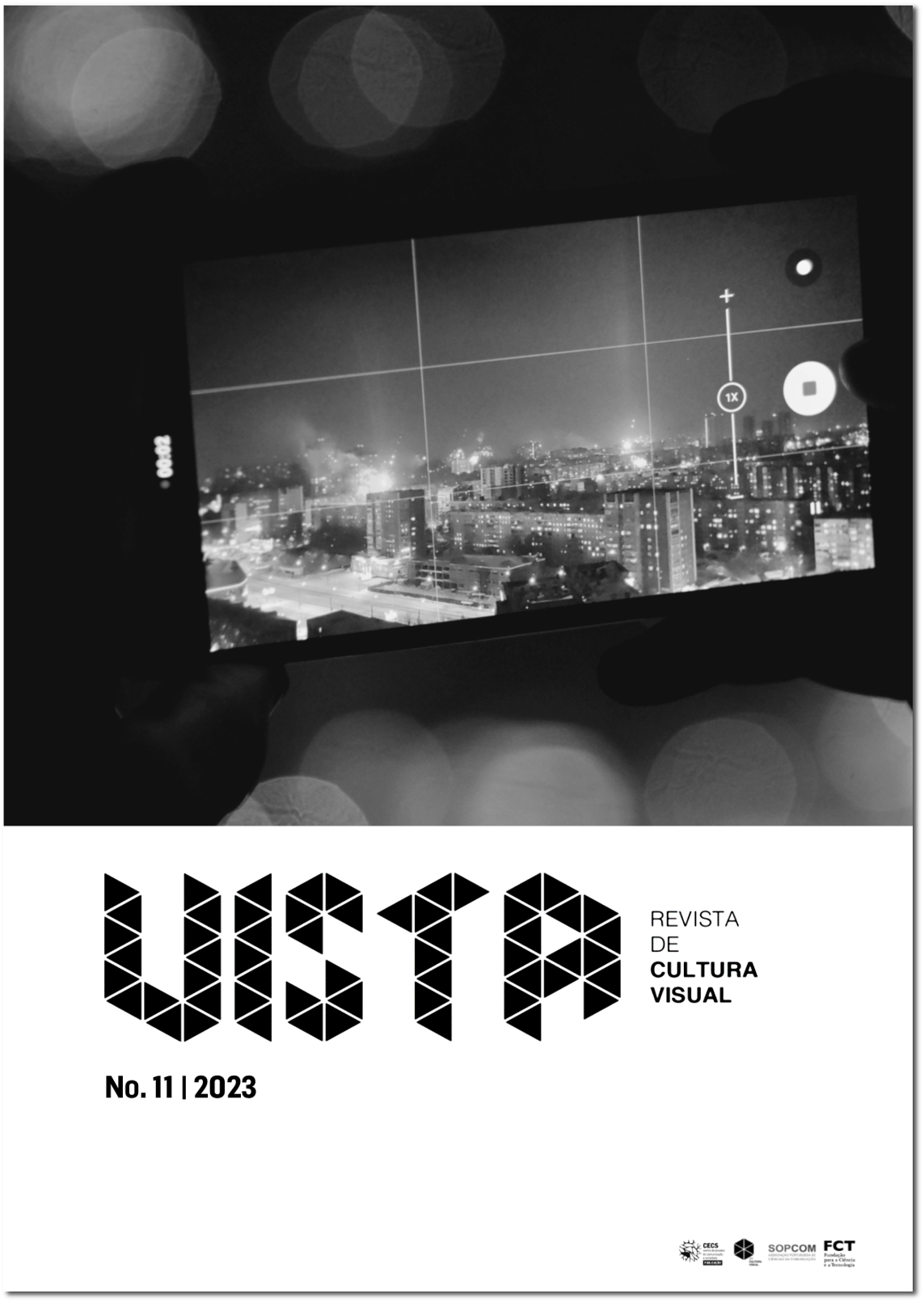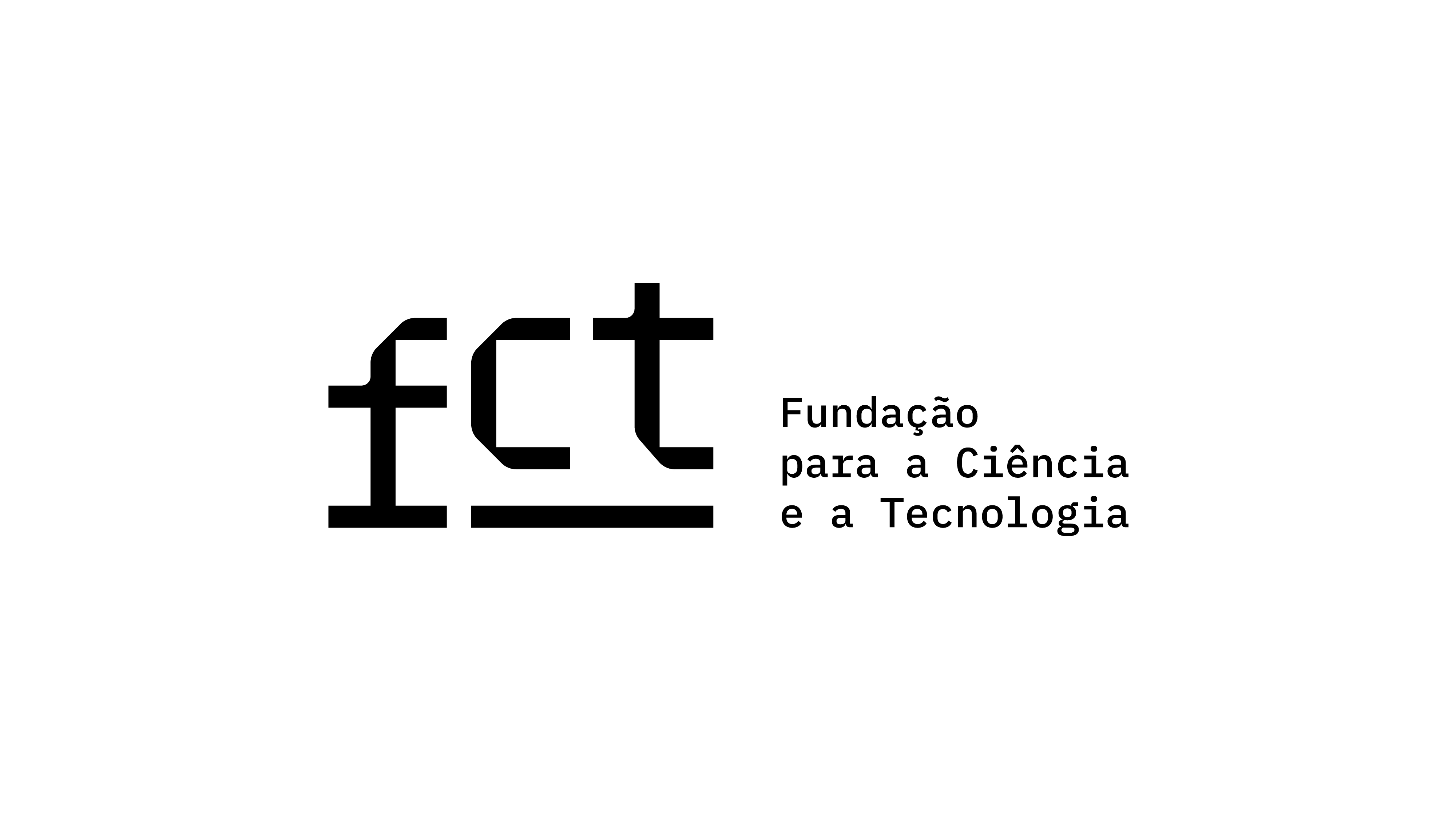Video Art: Confines of the Audiovisual Image
DOI:
https://doi.org/10.21814/vista.4509Keywords:
video art, image, audiovisual, television, media artAbstract
This paper outlines a reflection on video as a medium of artistic expression and its confines in the audiovisual image field.
For such purpose, we analyse its evolution, especially since the late 20th century, and its relation with other media art practices. In fact, we focus on the ontology of the image, be it filmic or videographic, trying to propose a territorial exploration in the domains of the audiovisual image, considering the implication of technological advances that leverage the aesthetic, conceptual and representational fields.
The aim is to understand the existence of interdisciplinary and intercultural convergences in the contexts of media art practices. We focus on the possible distinctions between the media of video, television and cinema, mainly on the intersection of the confines of the "media art", "visual culture", or "digital media image" genre classification and the expansion of their thematic spectrum. This work highlights some ideas in which video and television share the ontology of the image and examines how aesthetic, technical and cultural implications have been relevant to the outcome of some works and their visual interpretation. This way, the opposition between synthetic production and aesthetic material is articulated. By selecting some artists, this study seeks to explore the possibility of new artistic forms contributing to the configuration of the interactive image and its role in the evolution of the audiovisual.
Downloads
References
Balsom, E. (2017). After uniqueness: A history of film and video art in circulation. Columbia University Press. DOI: https://doi.org/10.7312/bals17692
Carvalho, A., & Lund, C. (Eds.). (2015). The audiovisual breakthrough. fluctuating images.
Castro, G. E. S. (2022). New media art: Taxonomía de las prácticas artísticas en el contexto de las tecnologías digitales [Tese de doutoramento não publicada]. Universitat Politècnica de València.
Coyle, R. (1993). The genesis of virtual reality. In P. Hayward & T. Wollen (Eds.), Future visions: New technologies of the screen (pp. 162–165). British Film Institute.
Daniels, D. (2006). Video/art/market. In R. Frieling & W. Herzogenrath (Eds.), 40yearsvideoart.de-Part 1 digital heritage: Video art in Germany from 1963 until present (pp. 45–47). Hatje Cantz Verlag.
Danto, A. (2013). Após o fim da Arte: A arte contemporânea e os limites da história (S. Krieger, Trad.). Odysseus. (Trabalho original publicado em 1995)
Export, V. (2011). Expanded cinema: Expanded reality. In M. Le Grice (Ed.), Time and spectator in the experience of expanded cinema (pp. 290–300). Tate Publications.
Foresti, M. (2021). Metamorphoses: The place of moving images. The Garage Journal: Studies in Art, Museums & Culture, (4), 66–89. https://doi.org/10.35074/GJ.2021.50.16.006
Frieling, R., & Daniels, D. (2005). Medien Kunst Netz 2: Thematische schwerpunkte. Springer-Verlag. DOI: https://doi.org/10.1007/3-211-27506-1
Frieling, R., & Herzogenrath, W. (Eds.). (2006). 40yearsvideoart.de-Part 1 Digital Heritage: Video art in Germany from 1963 until present. Hatje Cantz Verlag.
Grau, O. (2007). Media art histories. The MIT Press.
Helfert, H. (2007). Technological constructions of space-time: Aspects of perception. Media Kunst Netz. http://www.medienkunstnetz.de/themes/overview_of_media_art/perception/
Huber, H. (2006). The embodiment of code. In R. Frieling & W. Herzogenrath (Eds.), 40yearsvideoart.de-Part 1 digital heritage: Video art in Germany from 1963 until present (pp. 58– 63). Hatje Cantz Verlag.
Manovich, L. (2001). The language of the new media. The MIT Press. DOI: https://doi.org/10.22230/cjc.2002v27n1a1280
Meigh-Andrews, C. (2013). A history of video art. Bloomsbury Publishing.
Panofsky, E. (1962). Studies in iconology: Humanistic themes in the art of renaissance. Benjamin Nelson.
Rees, A. L., White, D., Ball, S., & Curtis, D. (2011). Expanded cinema: Art, performance, film. Moving Image Review & Art Journal, 2(1), 110–115. https://doi.org/10.1386/miraj.2.1.108_5 DOI: https://doi.org/10.1386/miraj.2.1.108_5
Schmidt, S. M. (2006). At the right place at the right time? A brief report on current video art. In R. Frieling & W. Herzogenrath (Eds.), 40yearsvideoart.de-Part 1 digital heritage: Video art in Germany from 1963 until present (pp. 34–39). Hatje Cantz Verlag.
Vitiello, S. (2004). Sound affects everything you see. Media Kunst Netz. http://www.medienkunstnetz.de/themes/image-sound_relations/sound_affects/
Wands, B. (2006). Art of the digital age. Thames & Hudson.
Wilson, S. (2002). Information arts: Intersections of art, science, and technology. The MIT Press. DOI: https://doi.org/10.7551/mitpress/3765.001.0001
Downloads
Published
How to Cite
Issue
Section
License
Copyright (c) 2023 Geraldo Eanes Soares de Castro

This work is licensed under a Creative Commons Attribution 4.0 International License.
Authors own the copyright, providing the journal with the right of first publication. The work is licensed under a Creative Commons Attribution 4.0 International License.













